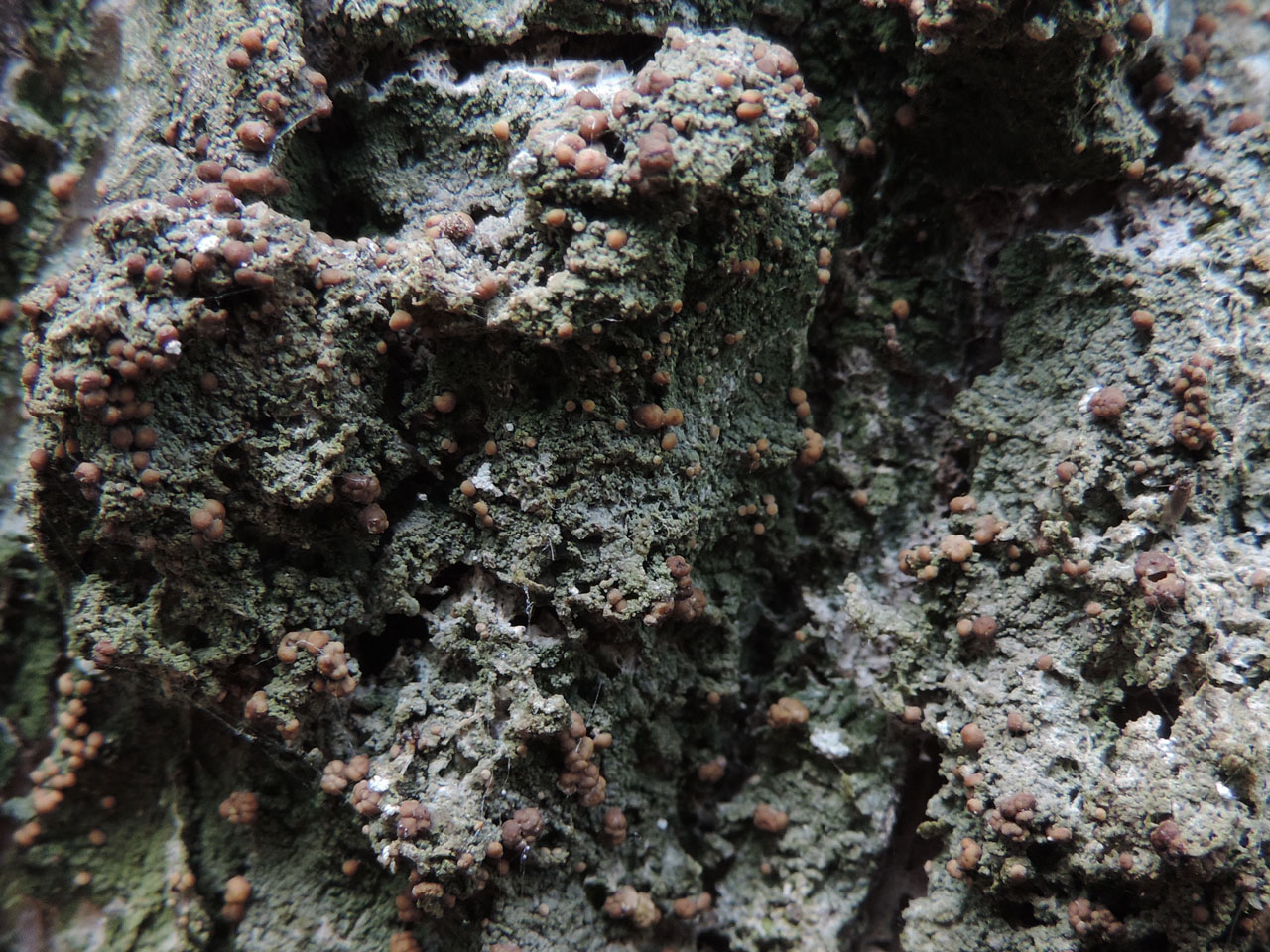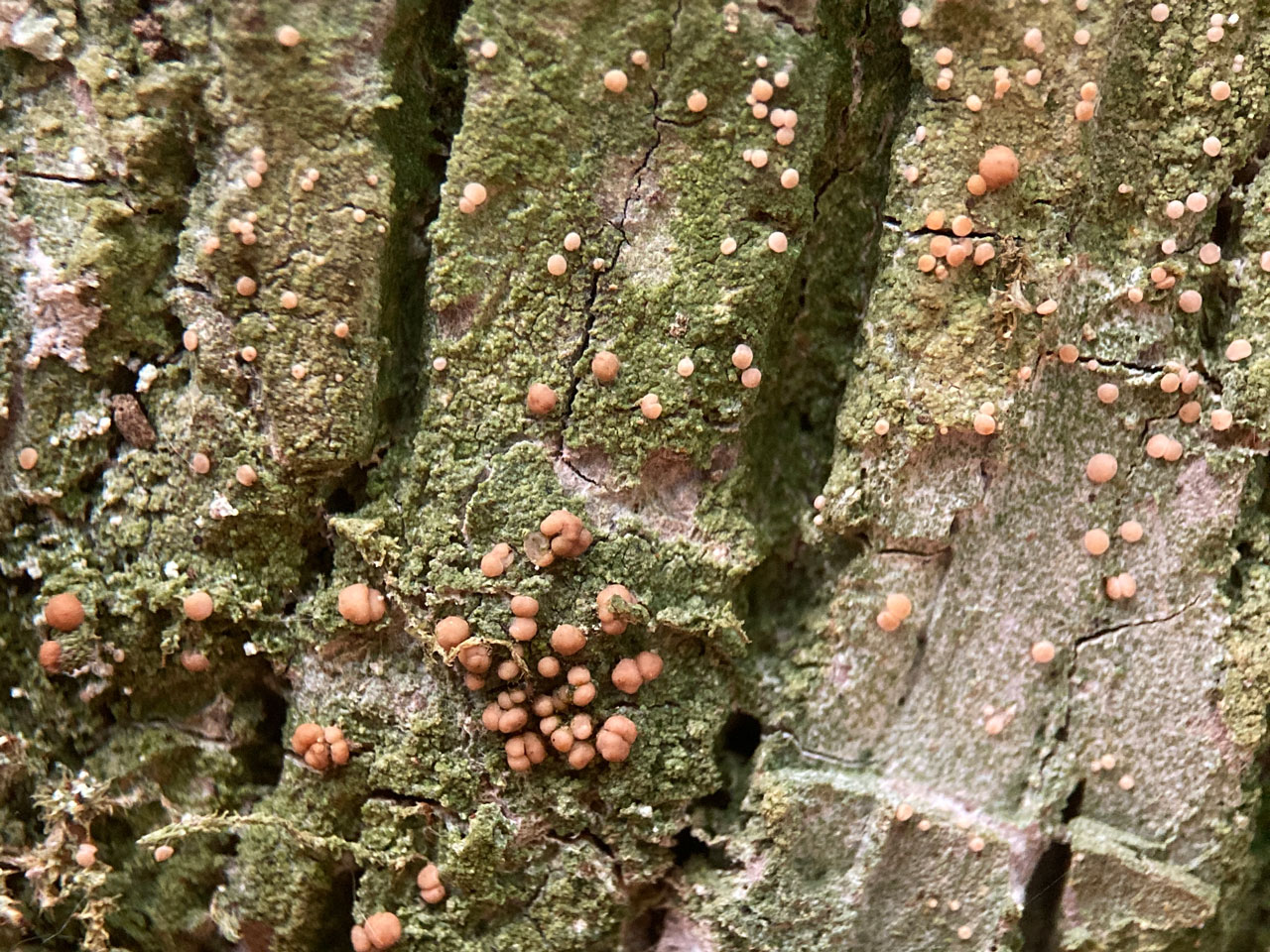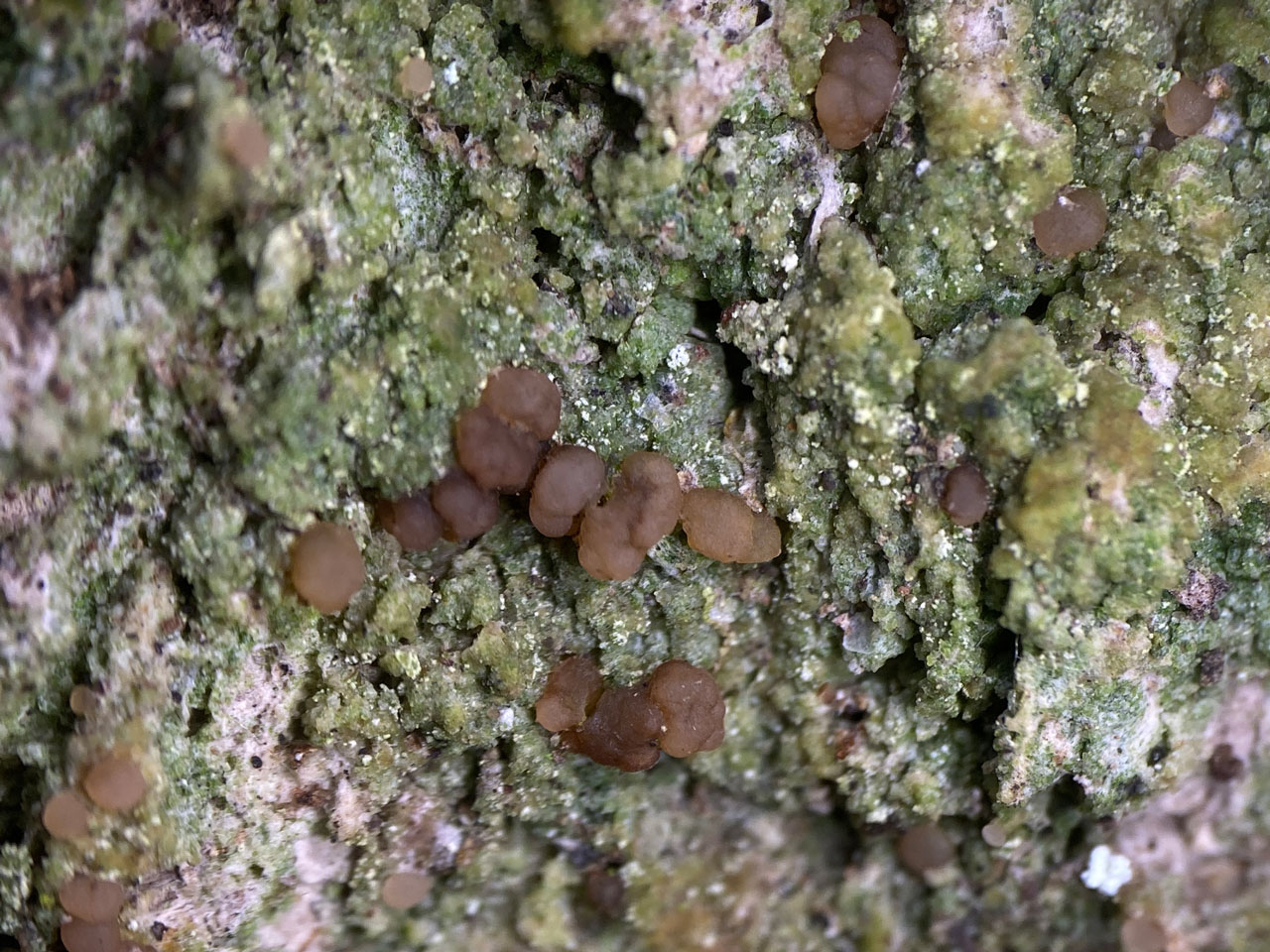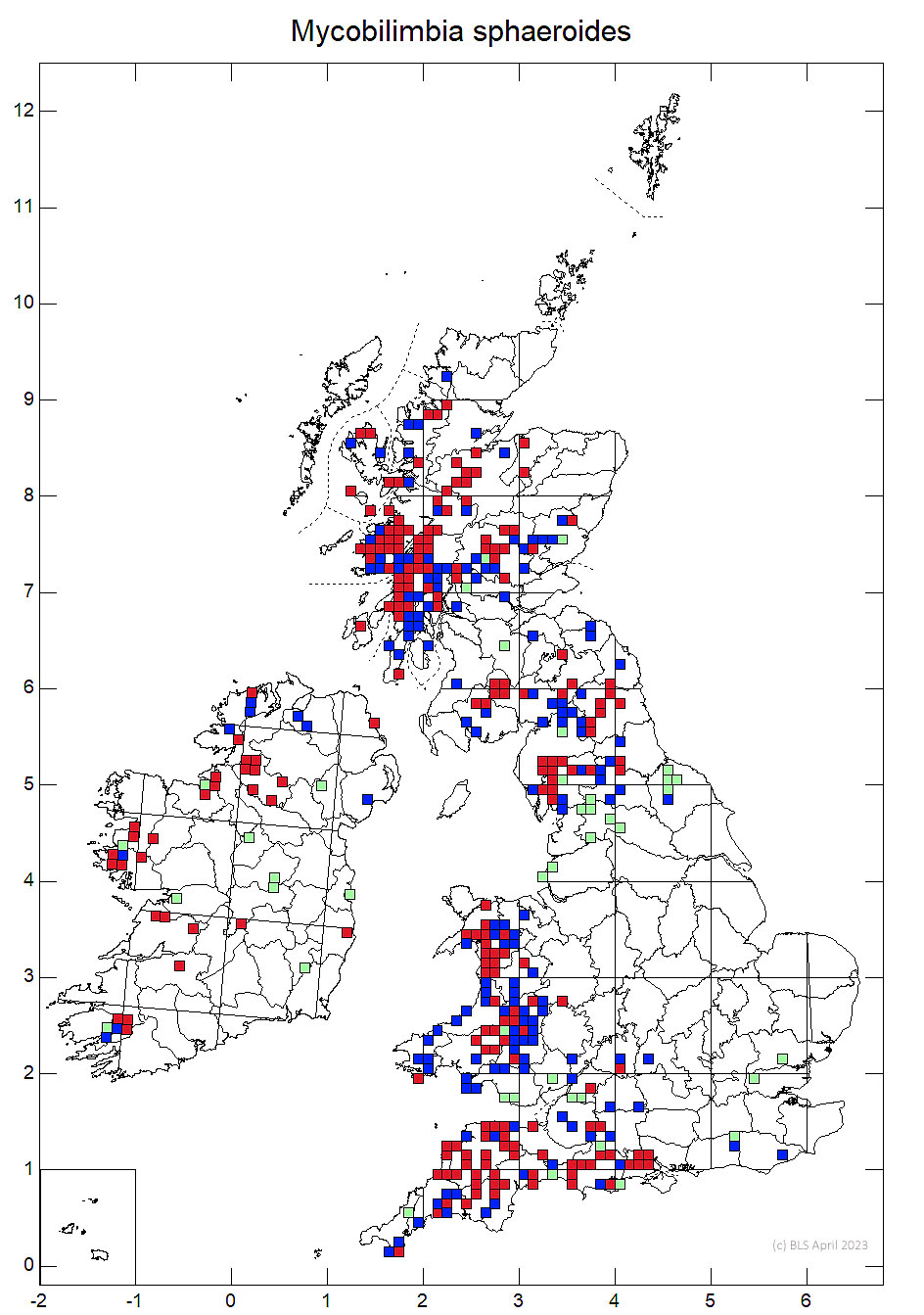Mycobilimbia sphaeroides
A distinctive old woodland species, forming large spreads of dark green granular but non-sorediate thalli, studded with dull orange to ochre apothecia that become swollen and globose as they mature. Found on shaded damp base rich bark on old trees in oceanic areas. Fertile Biatora vernalis can look similar but has a paler green more granular thallus, the young apothecia lack a conspicuous pale margin and it grows on more acidic bark.
Thallus granular, not sorediate but granules often so fine as to resemble soredia, 25– 70 μm diam., surface grey-green, matt. Apothecia 0.4–0.8 (–1.1) mm diam., moderately convex to ± globose, sessile with a constricted base, orange-pink to dull ochre, matt; margin slightly prominent when young, paler than the disc, soon excluded; true exciple colourless, 50–135 μm thick; hymenium 55–70 μm high, colourless or weakly orange-brown in apical parts; subhymenium 50–85 μm high, colourless; hypothecium 100–250 μm high, colourless; epithecium lacking. Ascospores (9.5–) 11.5–14 (–17) × (3–) 4–4.5 (–5) μm, (0-)1(-3)-septate, fusiform-ellipsoidal. Lichen substances not detected by TLC.
Distinguished from Biatora vernalis by a more finely granular thallus, predominantly 1-septate ascospores and young apothecia with a conspicuous pale margin. Lecania chlorotiza and L. cyrtella have smaller apothecia and narrower ascospores.
On very sheltered, mature deciduous base-rich tree trunks on base rich bark (especially Fraxinus and Quercus), often around their bases, shade tollerant. Often accomopied by the less noticeable Mycobilimbia epixanthoides. In old woodlands, more rarely on mossy rocks in wooded ravines or sheltered mountain gullies.

Local, Ireland and oceanic N. & W. Britain, extending eastwards along the coast in S. England but with no recent records east of the New Forest.
An old woodland species, widespread in the west but rare and declining in lowland areas to the south.
Wales: Near Threatened
Cannon, P., Ekman, S., Kistenich, S., LaGreca, S., Printzen, C., Timdal, E., Aptroot, A., Coppins, B., Fletcher, A., Sanderson, N. & Simkin, J. (2021). Lecanorales: Ramalinaceae, including the genera Bacidia, Bacidina, Bellicidia, Biatora, Bibbya, Bilimbia, Cliostomum, Kiliasia, Lecania, Megalaria, Mycobilimbia, Phyllopsora, Ramalina, Scutula, Thalloidima, Toninia, Toniniopsis and Tylothallia. Revisions of British and Irish Lichens 11: 1-82. Link
Text by Neil A Sanderson based on Cannon et al (2021)




